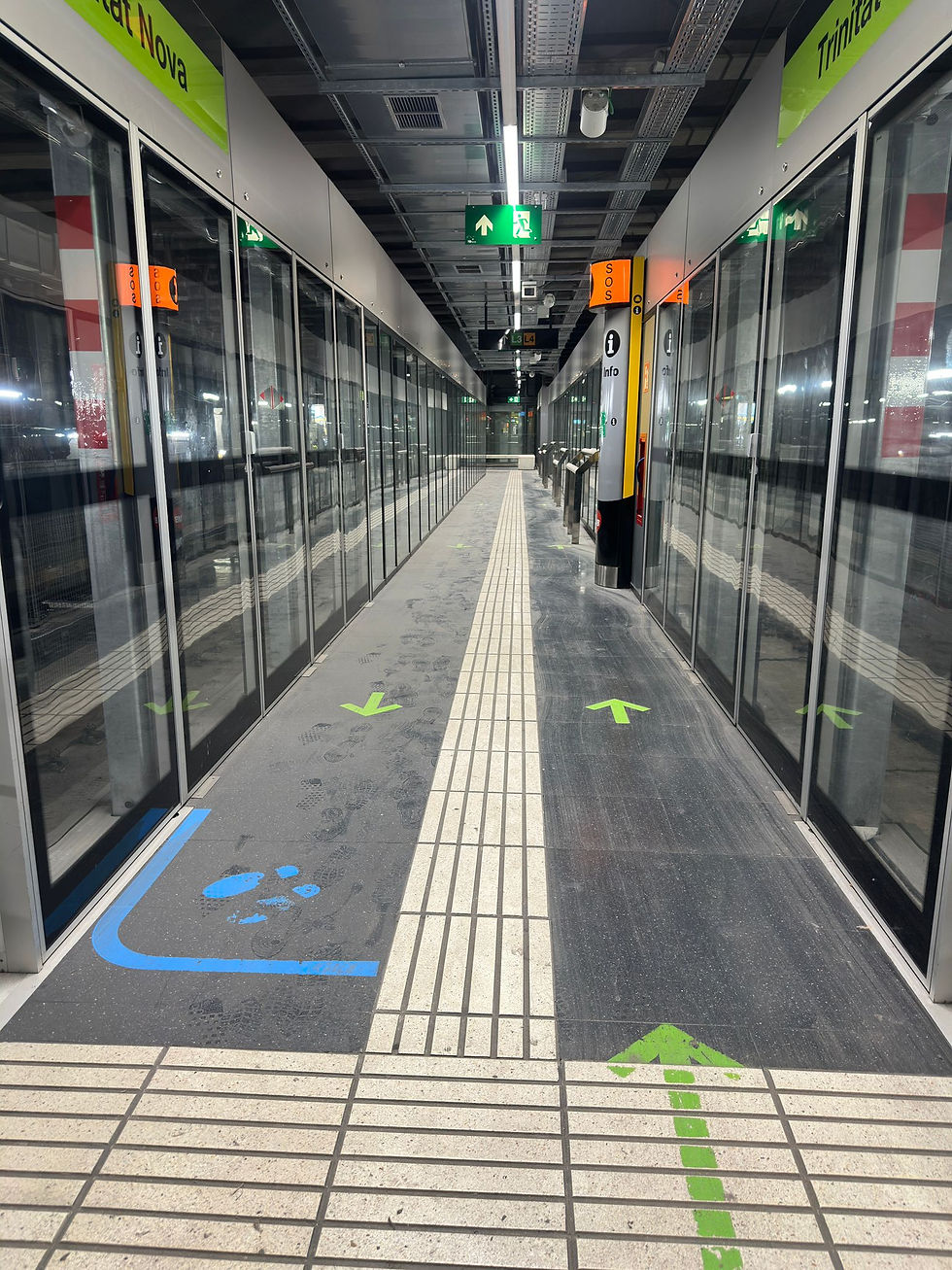Technical cleaning in L4 stations (Barcelona)
- Josep M Carulla Guia
- Sep 16
- 2 min read
Executive summary

Specialised service for urban rail infrastructure in Barcelona. In August 2025 we executed a technical cleaning plan across several L4 stations — including Trinitat Nova and Via Júlia — with scheduled work windows to avoid interference with operations. This document outlines scope, methodology, safety protocols, and results.
Client profile and context
Environment: Barcelona Metro network, Line L4 (interchange with L11 at Trinitat Nova).
Objective: raise perceived cleanliness standards, pedestrian safety, and preventive maintenance of critical surfaces (floors, tactile paving, handrails, validators, screens, entrances and concourses).
Constraints: execution during low-footfall/night windows, H&S compliance, access coordination, and incident traceability.
Project challenges
Operational milestones
— Multiple stations within a compact August schedule.
— Access and logistics on platforms with restricted circulation.
— Corporate signage and diverse fixtures (PSD/screens, escalators, lifts, validators, turnstiles, benches, bins, etc.).
Controlled risks
— Slip risk during and after mopping.
— Electrical hazards in areas with live equipment (validators, panels, lifts).
— Waste and spill management.
Scope of works
Intervened areas (typical station)
— Platforms: floors (granite/terrazzo), tactile paving, edge details and sand trays, skirtings, walls.
— Concourses: turnstiles/validators, handrails, information panels, signage, vending machines, fixtures.
— Access ways: fixed and mechanical stairs, lifts (car and exterior), corridors and ramps.
— Special elements: platform screens/PSD (where present), ducts and grilles, perimeter technical rooms (external surfaces).

Stations included
— Trinitat Nova (L4/L11) — full intervention on platforms and concourses.
— Via Júlia (L4) — intensive work on platforms and access ways.
— Maragall (L4) — intensive work on platforms and access ways.
— Guinardó (L4) — intensive work on platforms and access ways.
Methodology and protocols
Planning
— Pre-inspection and station-by-station checklist.
— Coordinated intervention windows to avoid service impact.
— Phased workflow: dust removal → descaling/soil removal → technical mopping → drying → final QA.
Techniques and tools used
— High-performance scrubber-dryers/vacuums with moisture control.
— Neutral descaling/soil-removal agent for granite/terrazzo floors and precise cleaning of tactile paving.
— Technical microfiber for stainless steel (turnstiles, handrails, doors) and glazing.— PSD/screen cleaning with anti-hazing protocol.
Health & Safety
— Delineation/barriers with well-defined pedestrian flows and temporary signage.
— Slip resistance control (R coefficient in internal post-mopping tests).
— Task-specific PPE (gloves, goggles, anti-slip footwear).— Waste management and incident traceability.

Results
— Improved cleanliness perception on platforms and concourses (internal/external satisfaction indicator: to be confirmed).
— Reduced embedded soil on tactile paving and edges (before/after comparisons: % to be confirmed).
— Zero operational incidents during work windows (to confirm).
— On-time delivery per August 2025 schedule.
Why Net i Pulit for critical
infrastructure
Key differentiators
— Experience in high-footfall environments and night windows.
— Specific protocols for tactile paving and anti-slip surfaces.
— Station-level photo and incident reporting.
— In-house uniformed team and full traceability.
Related services
— Parking/garage cleaning (in-station interiors and adjacent car parks).
— Industrial cleaning (technical rooms, shared electrical rooms).
Complementary services (cross-sell)
Do you manage stations, interchanges, or infrastructure in Barcelona? Let’s design a technical cleaning plan that won’t disrupt operations.



Comments